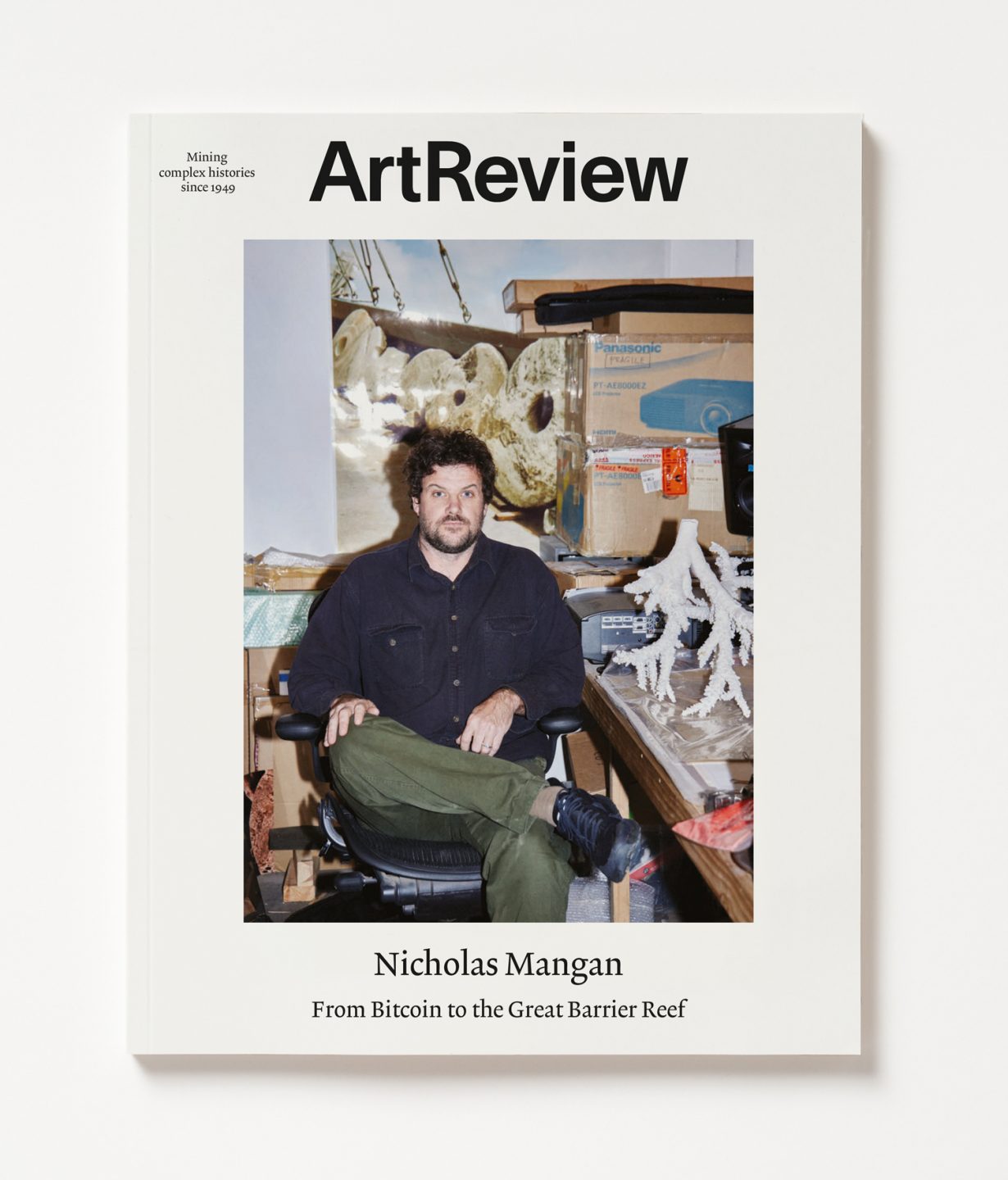
***Subscribe now or get your copy from our new online shop***
The artists ArtReview meets in the May issue are interested in history less as an academic subject than as a raw material. If the former, to simplify, is the narrative of how A and B and C led eventually to XYZ, Nicholas Mangan could be speaking for many of those featured here when he notes, “I don’t think in a linear way”. The danger of linear thinking, his arguments goes, is that it aligns with how nation-states and nationalism operate; which would be contrary to Mangan’s aims, given his longstanding interest in the colonial and extractivist roles his home country, Australia, has played in the Pacific. Naomi Riddle speaks with Mangan about the less linear approach of his ‘material storytelling’. The Greek artist Vangelis Vlahos clearly has some affinity with this point of view, telling Stephanie Bailey that he makes art as “a way to deal with an event and to activate it, if possible, in a contemporary context”. So the viewer of his videos and sculpture might have only a cursory, or at least removed, interest in the so-called Regime of the Colonels, the rightwing military junta that ruled Greece from 1967 to 1974, or the historic asylum woes of Abdullah Öcalan, the Kurdistan Workers’ Party’s founding leader, but in Vlahos’s hands, specific episodes are elevated in ways that open out into more far-reaching and complex questions about knowledge of the past and perception in politics.
If Mangan and Vlahos are something like archaeologists, then Liu Chuang is a bitcoin miner, processing disparate historical resources, stories and media to create power, or at least a commentary on the nature of power and how its effect on human and nonhuman nature. The result, writes Mark Rappolt, ‘is a paean to diversity in the face of humanity’s blinkered drive down a highway to ecological hell’. MSCHF hate being called pranksters, Jonathan T.D. Neil finds, so it might be helpful to think of them as saboteurs instead, creeping up on and vandalising the system for the greater good through a long series of hacks, custom-made websites, humorous viral stunts and the general exploitation of desires and loopholes.
Elsewhere in this issue Emily McDermott speaks to Romanian artist and choreographer Alexandra Pirici on restaging history, and Rosanna McLaughlin considers the historical and current relevance of gender theorist Judith Butler amid the raging culture wars. Juliet Jacques writes about burnout and J.J. Charlesworth risks it by reviewing the 300-plus-artist main exhibition, Foreigners Everywhere, at the Venice Biennale. Naomi Riddle visits the Biennale of Sydney.
What relevance does Damien Hirst have to Mexicans today?, asks Gaby Cepeda in her review of the British artist’s latest retrospective. Pádraic E. Moore considers Hirst’s cerebral peer Liam Gillick’s new show in Brussels. Among other shows under consideration, ArtReview’s new US editor, Jenny Wu, looks at the Metropolitan Museum of Art’s essayistic exhibition The Harlem Renaissance and Transatlantic Modernism; Ignacio Szmulewicz R. is in Antigua, Guatemala, for a survey of Margarita Azurdia’s work, and Oliver Basciano visits a São Paulo off-space for a group show on journeys.
Plus a comic strip from Molly Mendoza and a jam-packed selection of the best new books.
***Subscribe now or get your copy from our new online shop***